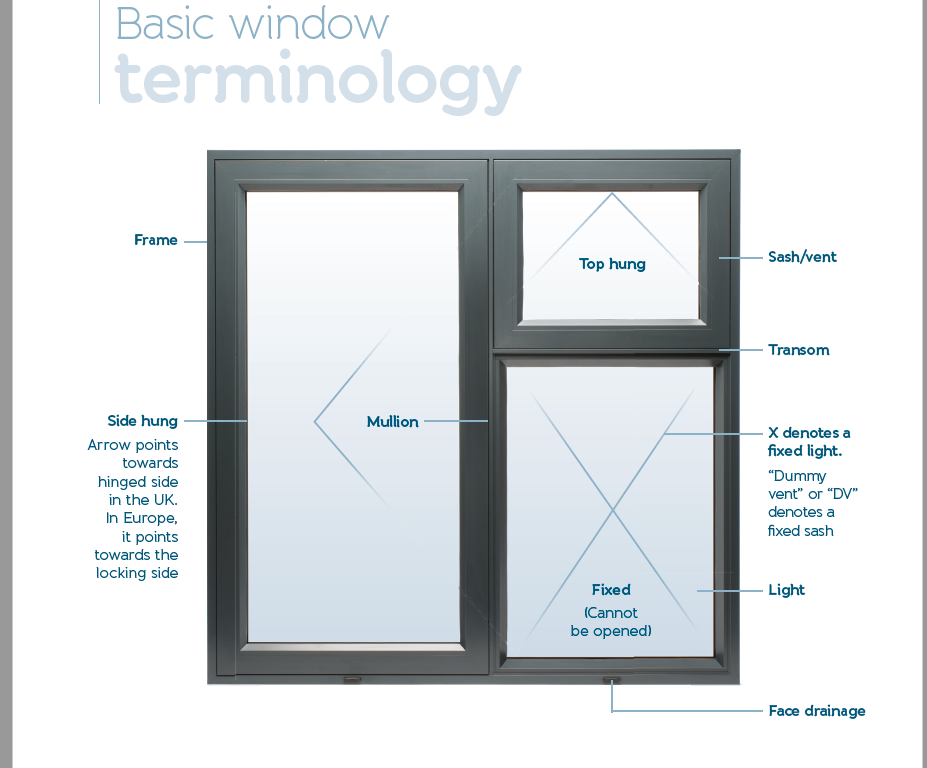
Aerogel
Aerogels are a class of solid, porous materials that have extreme properties. Aerogels can be made out of wide variety of substances, but they will all have the same kind of geometric structure. Some common, unusual properties of aerogels include:
- Incredibly light-weight for a solid
- Incredibly insulating
- Incredibly soundproof
The type of aerogel used in Origin windows is incredibly insulating and has the lowest thermal conductivity of any known solid material. It’s used to insulate space shuttles and spacesuits.
Bay window
Three or more windows that protrude out from the exterior wall. The windows create a semi-circle effect.
Glazing Bead
The glazing bead is of a piece aluminium that holds the glass in place, with the help of a wedge gasket.
Casement window
These are opening windows hinged at the side or the top of the frame.
Dummy sashes
Unlike a casement window, a dummy sash does not open. They are used to match the aesthetic of an opening casement window.
Egress windows
Egress windows are windows big enough to allow emergency exits in the case of fires. Egress windows must meet minimum requirements as specified in building regulations.
Gable window
A gable window is triangular in shape and designed to fit in the space where two sloping roofs of a building meet.
Mullion
A mullion is a vertical part of the window frame that forms a division between the different sashes or fixed windows. It provides structural support.
Sash
The sash of a window is the extra aluminium that makes up dummy and casement windows. The glass fits into the sash. Fixed frames do not have sashes.
Trickle vents
A trickle vent is a small opening in a window that allows ventilation. In the UK, windows must meet minimum requirements for ventilation so are normally fitted with trickle vents.
U-Value
The U-Value is a measure of how good an insulator a material is. The lower the U-Value the more efficient the material, meaning more heat is kept in or cold kept out.
